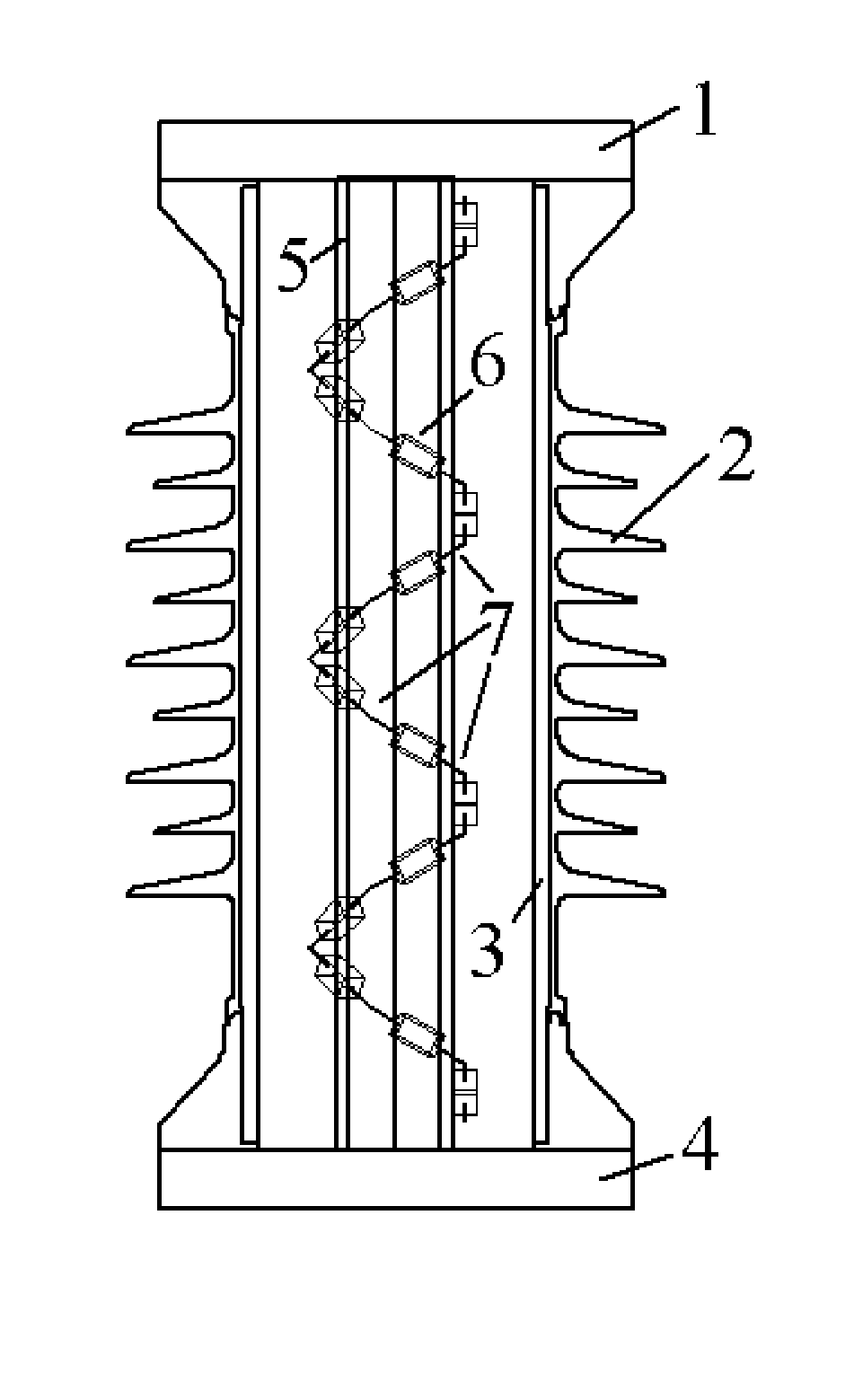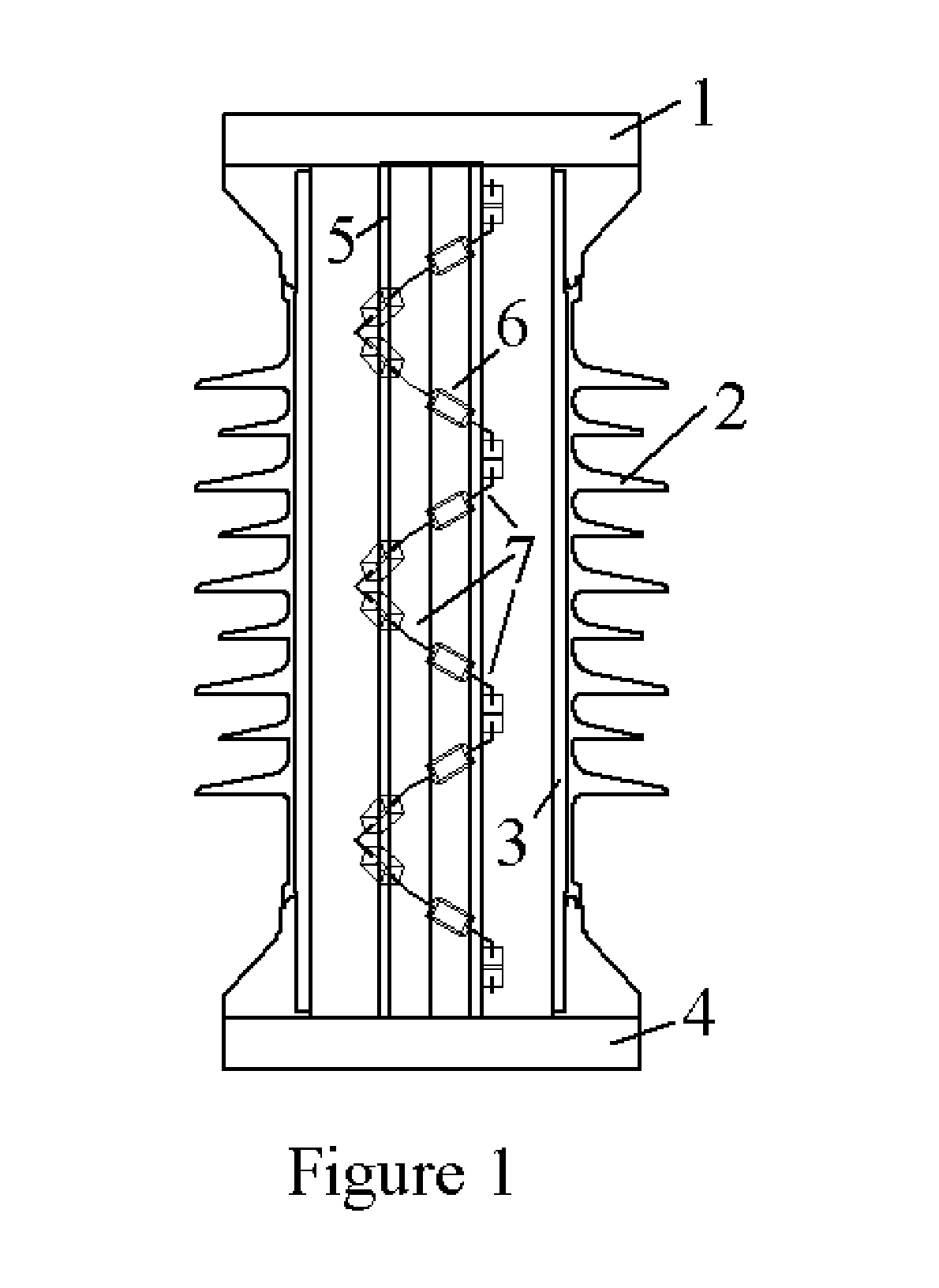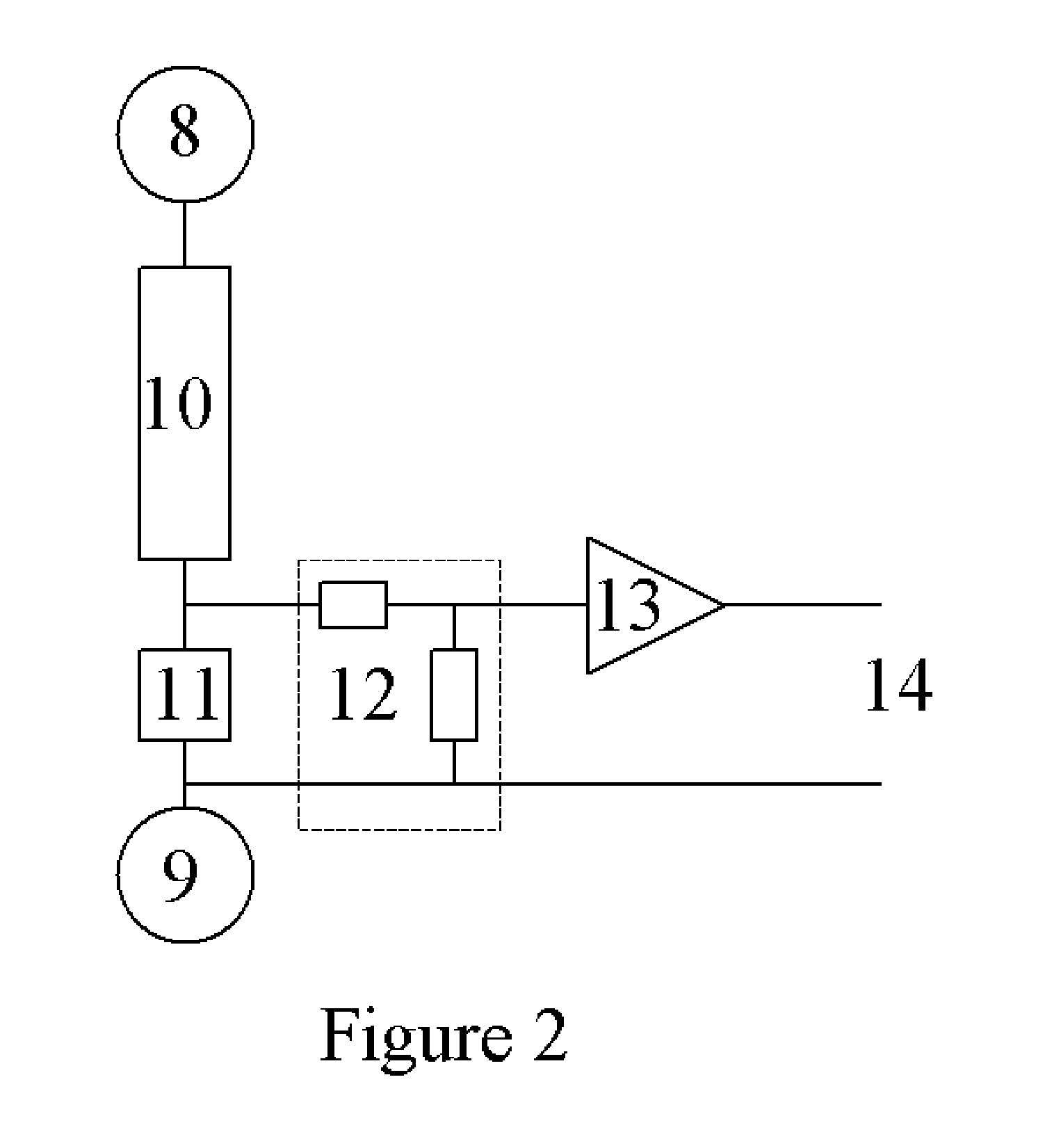Voltage sensor and dielectric material
a dielectric material and voltage sensor technology, applied in the field of voltage sensors, can solve the problems of high frequency response of the device, size, safety and cost, and limitations of the above-referenced prior art, and achieve the effect of high dielectric strength
- Summary
- Abstract
- Description
- Claims
- Application Information
AI Technical Summary
Benefits of technology
Problems solved by technology
Method used
Image
Examples
Embodiment Construction
[0028] A voltage sensor is described (shown in FIG. 1) that uses a plurality of impedances 6 connected in series between two conductors 1 and 4 at different electrical potentials. An output signal is provided by measuring the voltage across one of the impedance elements at one or both ends of each string. The impedances 6 are selected to meet particular performance criteria that depend on the application of the divider. The sensor consists of one or more strings of impedances 7 that are fastened to an insulating support tube 5. The divider structure is contained within an insulating housing 3 made from porcelain or polymer with weather sheds 2 on the exterior surface. The strings are distributed in an optimal fashion for voltage grading, with the preferred embodiments being straight sections, or coiled shapes having cross sections including but not limited to circular or square. Each string starts at a different angular location at the top of the tube. For example, if two strings ar...
PUM
 Login to View More
Login to View More Abstract
Description
Claims
Application Information
 Login to View More
Login to View More - R&D
- Intellectual Property
- Life Sciences
- Materials
- Tech Scout
- Unparalleled Data Quality
- Higher Quality Content
- 60% Fewer Hallucinations
Browse by: Latest US Patents, China's latest patents, Technical Efficacy Thesaurus, Application Domain, Technology Topic, Popular Technical Reports.
© 2025 PatSnap. All rights reserved.Legal|Privacy policy|Modern Slavery Act Transparency Statement|Sitemap|About US| Contact US: help@patsnap.com



